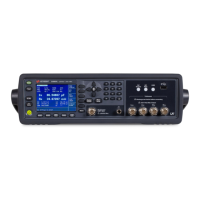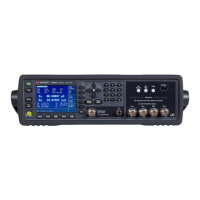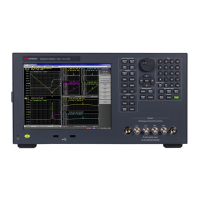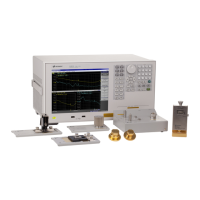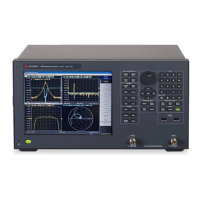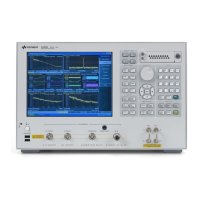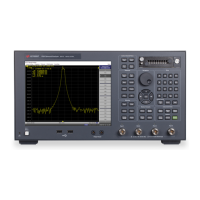Keysight E4981A 120 Hz/1 kHz/1 MHz Capacitance Meter 249
Technical Information
Basic Principles of Capacitance Measurement
Precautions for four-terminal pair measurement
This section describes general precautions and techniques for using the
four-terminal structure efficiently.
Measurement contacts
To ensure high accuracy when using the four-terminal pair measurement, the
measurement contacts must meet the following requirements.
• Make the signal path between the capacitance meter and the DUT
(indicated by 1 in Figure E-8) as short as possible.
• For a four-terminal pair measurement circuit configuration, the outer
shields of the H
CUR
, H
POT
, L
CUR
, and L
POT
terminals must all be connected
at the nearest possible point to the DUT. (Refer to 2 in Figure E-8.)
Figure E-8 Measurement contacts
Contact resistance
Due to contact resistance between the DUT contacts and the DUT itself, a
measurement error occurs when measuring large capacitance values,
especially for measurement of D (dissipation factor).
For measurement of large capacitance values, the four-terminal pair
measurement method has an advantage over the two-terminal method in that
measurement errors are smaller. Select a four-terminal measurement test
fixture that can secure the DUT to stabilize the connection and minimize
contact resistance.
